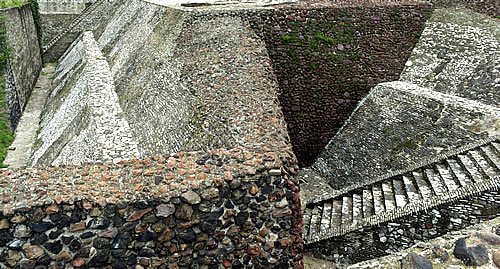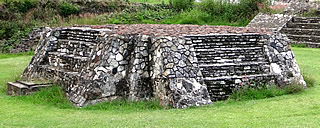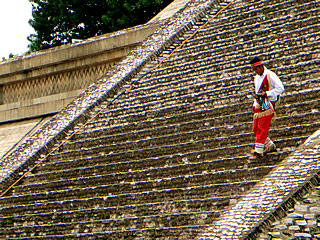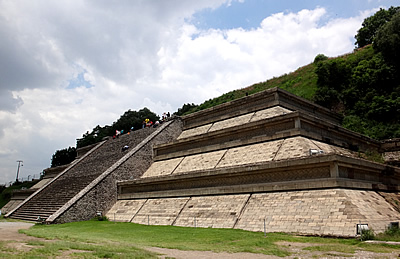

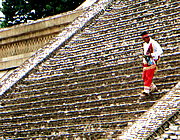
Fascinating visit to the biggest pyramid yet discovered in the world, especially the underground tunnels.
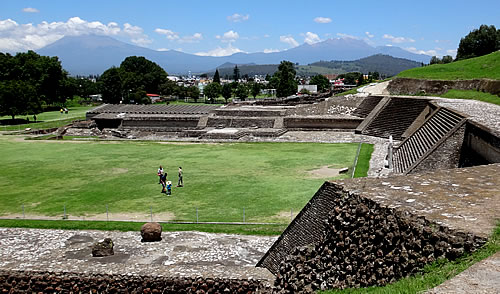
On the way to Puebla from Mexico City we visited the Great Pyramid of Cholula.
Heavy traffic made it a slow journey but we stopped on the way for refreshments and our first view of Popocatepetl. At almost 5,500 m it towers above the surrounding plain. Alongside is Iztaccihuatl which is only slightly lower. While Popocatepetl - meaning "smoking mountain" - is an active volcano, Iztaccihuatl - "the white woman" - is extinct. As with many natural features in Mexico, there is a legend attached to the two volcanoes. Popocatepetl was a warrior, in love with a beautiful princess, Iztaccihuatl. He left to go to war and, while he was gone, a rival told Iztaccihuatl that Popocatepetl had died in battle. Iztaccihuatl died of a broken heart. On his return, the grief-stricken Popocatepetl carried his love to the top of a mountain, laying her down and crouching beside her. The snow covered their bodies and the two volcanoes were formed.
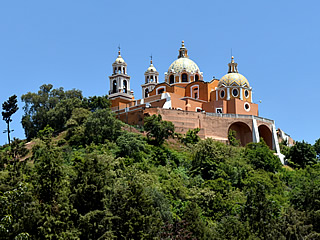
We had even better views when we reached Cholula. One of the most important prehispanic centres, Cholula is about 10 km west of Puebla. The Great Pyramid here is the Cholulteca's most impressive achievement: the largest pyramid by volume and footprint anywhere on the planet, including the Great Pyramid of Cheops in Egypt, though this is higher, it is also the largest monument of any kind ever built. It underwent almost continuous construction for over a thousand years from 300 B.C. until the city was abandoned around 850 A.D.
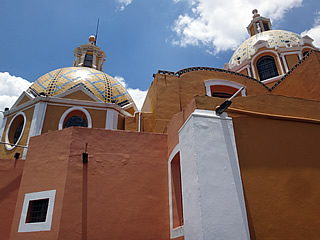
Before we explored the pyramid we climbed to the top where the Spaniards had constructed a church: the Iglesia de Nuestra Senora de los Remedios or the Church of Our Lady of Remedies. Once a temple would have been in this position, on top of the Great Pyramid.
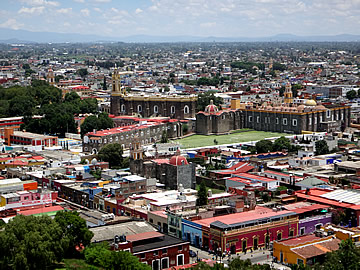
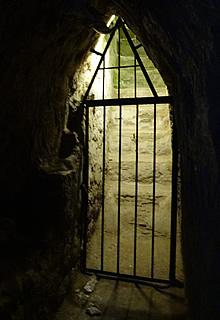
We entered the pyramid complex through a long stretch of tunnels which traverse the base of the pyramid below ground and pass several models of different stages of construction and tantalising glimpses of staircases and passages.
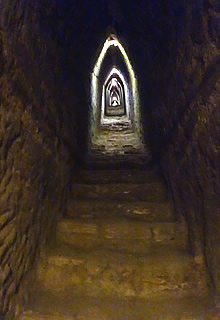
The pyramid is a composite of six built one on top of the previous. As with many meso-american sites, the past was not obliterated but preserved within the new structure.
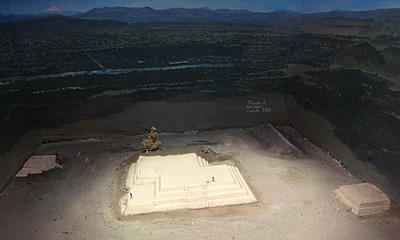
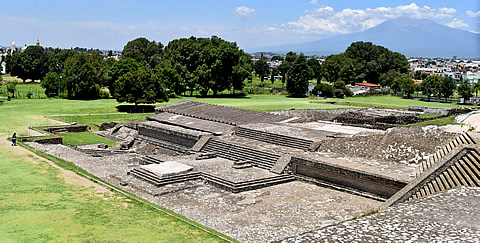
The pyramids were all built in the same north south alignment. On the south side are four structures (2-5) abutting the pyramid and a fifth (Structure 1) displaced to the south.
Talud-tablero building styles, and decorations such as of Quetzalcoatl, conch and shell, demonstrate influences from other cultures such as at Teotihuacan and the people of El Tajin close to the coast of the Gulf of Mexico. No doubt trade and conquest brought many of the different cultures into contact.
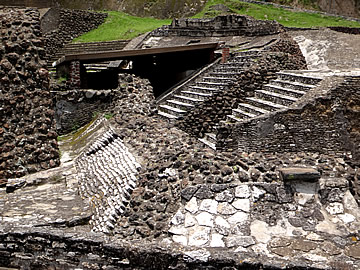
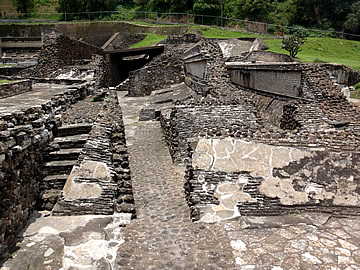
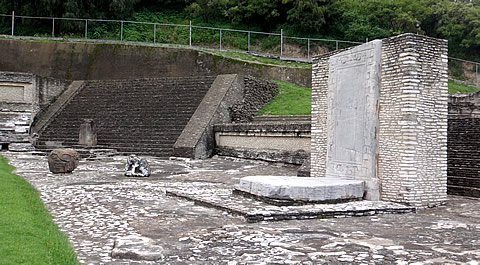
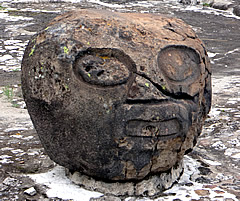
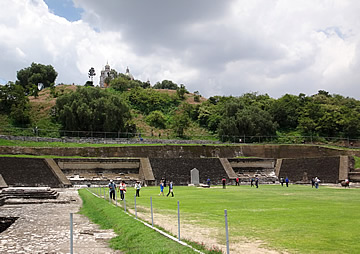
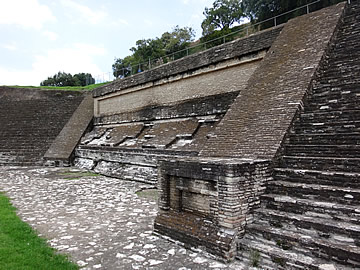
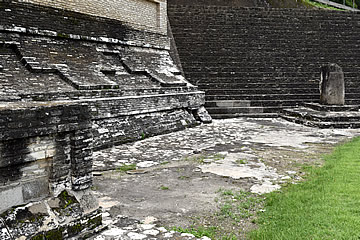
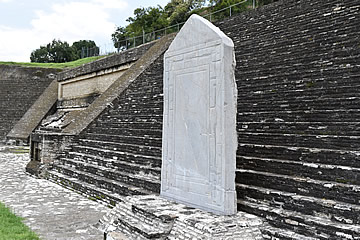
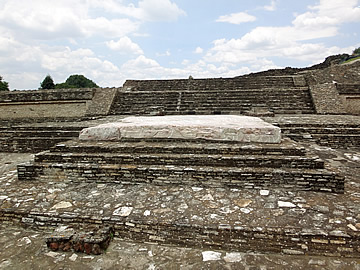
The Courtyard of the Altars is one of the most impressive of the spaces to be seen at Cholula. It is large with a number of altars in different styles around its sides. References to the feathered serpent god Quetzalcoatl, and the talud-tablero architectural style, both speak of Teotihuacan influence. This must have been an extremely important ceremonial site.
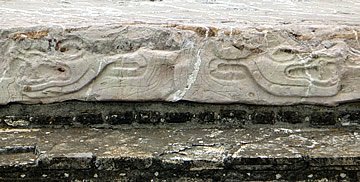
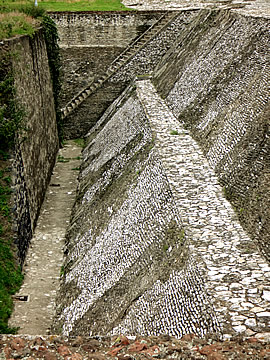
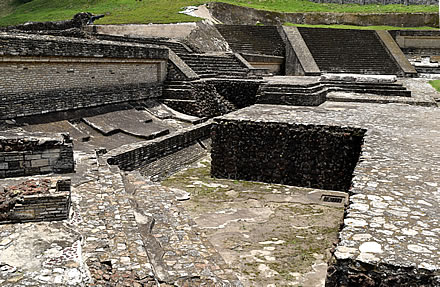
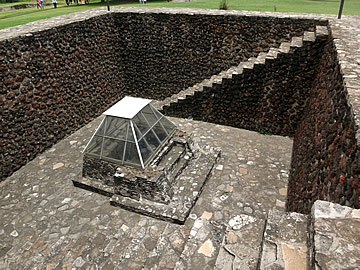
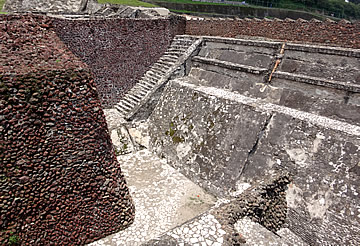
The oldest building on the Courtyard of the Altars is on its west side - the famous mural of the drinkers was discovered on its 60m long base.
